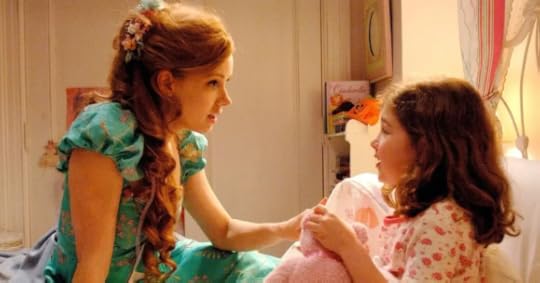Deconstructing the Wicked Stepmother
It was common in the early days of fairy tales for the enemy of a princess or future princess to be her vain stepmother. There were many reasons for this, most of which are no longer relevant by modern standards, causing that trope to fall by the wayside. One outdated reason is that girls rarely left the house (or "tower" if you will) in the old days because they were expected to do housework and eventually become mothers. Therefore, meeting an enemy outside of their own homes would have been unlikely. Why do you think so many princesses long for freedom? The other reason is that fairy tales are meant to encourage children to love and obey their parents, so it would be counterintuitive for them to go up against their biological caretakers. There are a few rare exceptions, but these disturbing stories about horrible parents never made it into the mainstream media for good reason. Giving them stepparents who were brought into their lives at a later time solves this problem and allows the heroine to have a challenge to overcome.

The first time that Disney openly challenged these standards was in 2007 with Enchanted . Enchanted was meant to be a turning point in Disney's history in which they were ready to admit that they had overcome many of the questionable stereotypes of the stories they had adapted in the past and were moving on to healthier standards for the portrayals of girls and women in the media. Indeed, the princess stories that were adapted following Enchanted, including The Princess and the Frog , Tangled , and Frozen , made much bolder changes to their source material than anything they had done in the past. Although their first two princess movie adaptations, Snow White and the Seven Dwarfs in 1937 and Cinderella in 1950 included evil stepmothers as villains, Disney has moved on to portray healthier family dynamics in all sorts of unique situations.
In Enchanted, Giselle, a stereotypical princess archetype, becomes a stepmother to Morgan, the daughter of a single father who is struggling to be a good role model. In a key moment of the film, Giselle tells Morgan that it isn't true what they say about evil stepmothers and that Prince Edward has one who is probably lovely. Although Queen Narissa turns out to be the wicked stepmother of nightmares, her defeat represents a new era for modern media in which nice stepmothers can coexist with more realistic portrayals of modern families. The movie Godmothered, a spiritual sequel to Enchanted from 2020, took this a step further by showing that a single parent can be happy with just the love of her child without even needing to remarry. In 2022's Disenchanted, the actual sequel to Enchanted, Giselle falls under a curse in which she becomes the evil stepmother she has sworn to never be. This enforces that the negative stereotypes of the past can be harmful and need to be overcome for a healthier future.

There are many other positive resources available in book format, the new dominant medium for princess stories, including Tales of Virtuous Stepmothers, an anthology of original fairy tales by Georgina Warren, and My Fairy Stepmother, a picture book by Marni Prince. These resources are great for children who are struggling with major changes in their family and still want to feel like the heroine of a fairy tale. Change doesn't have to be a bad thing, and Fairy Godmothers can come from the most unexpected of places. At the end of the day, being a true princess is all about embracing love and kindness, and that includes people who might enter their families unexpectedly. My favorite series, Sofia the First, centers around a family formed by new beginnings. Sofia becomes a princess and gains a stepfather, stepbrother, and stepsister, and Amber and James gain a new stepsister in Sofia and a new stepmother in Queen Miranda. The premiere movie, Once Upon a Princess, places a heavy focus on how being a family means more than just sharing the same blood.
The trope of the evil stepmother has been a relic of outdated societal norms, but these standards have been changed and overcome since the turn of the millennium. By portraying healthier family dynamics and diverse representations of love and kindness, modern media has evolved to showcase the true meaning of being a princess. With resources like Enchanted, Tales of Virtuous Stepmothers, and Sofia the First, children can find inspiration in stories that celebrate the beauty of blended families and second beginnings. As we continue to strive for a more inclusive and compassionate world, let's embrace the kindness, love, and acceptance that define what it means to be a true princess.


